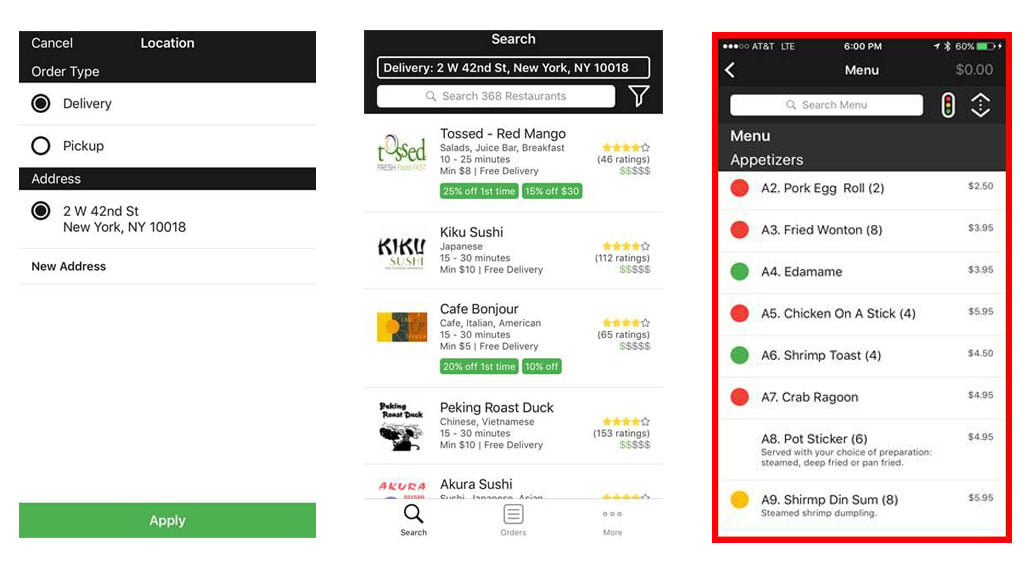What if Grubhub not only allowed you to pick out menu items at local restaurants for delivery, but also ranked those menu items according to healthiness? That’s the idea behind a new app, Order Healthy, which was launched in New York City in 2016 and is now rolling out in the DC area.
Here’s how it works: after adding your address, Order Healthy shows restaurants available in your area. The app currently includes a network of 150 DC-area eateries, with plans to reach at least 500 around Washington by the end of the year. Once you’ve selected a restaurant, you can pull up the menu to place your order. On each menu—in addition to the dish name and price—the Order Healthy app also includes a colored circle: green for healthiest, yellow for moderate, and red for unhealthiest.
“Online ordering is definitely the way of the future, and we want to make sure that people are still conscious of what they’re eating,” says Order Healthy co-founder Ben Sakhai.
Sakhai and his brother, who helped create the app, don’t have experience in nutrition or tech—their backgrounds are in finance. So when it came to the mechanism that categorizes food, they didn’t build it themselves. Rather, they paired the app with another app, Join the Challenge, which rates the foods. Because not every restaurant has nutritional information available for their menu items, Join the Challenge’s ranking is based off of the food names and descriptions—the same thing you’d see if you were reading the restaurant menu.
But how accurate is this method, which relies on food descriptions rather than nutrition facts? Join the Challenge funded a study to find out, and researchers compared the app’s color coding selections against the actual nutrition facts from 20 chain restaurants. The analysis found that the green foods were lower than yellow foods, which were lower than the red foods, in calories, calories from fat, total fat, saturated fat, and carbohydrates for a 100-gram serving.
Because the study was funded by Join the Challenge, it’s important to take the results with a grain of salt and continue to use good judgement at restaurants, taking a look at the nutrition facts yourself wherever possible. But while the color coding in Order Healthy has the potential for inaccuracies—a legal disclaimer on the app says, “Please be advised that the JTC Food Ratings themselves have not been reviewed by persons with the expertise required to provide you with complete, accurate, or reliable information”—it may be helpful in making quick, health-focused decisions about what to order in for dinner.
“The idea is to be really conscious of what you’re eating and to see how often you’re ordering those red, yellows, and greens,” says Sakhai.




















